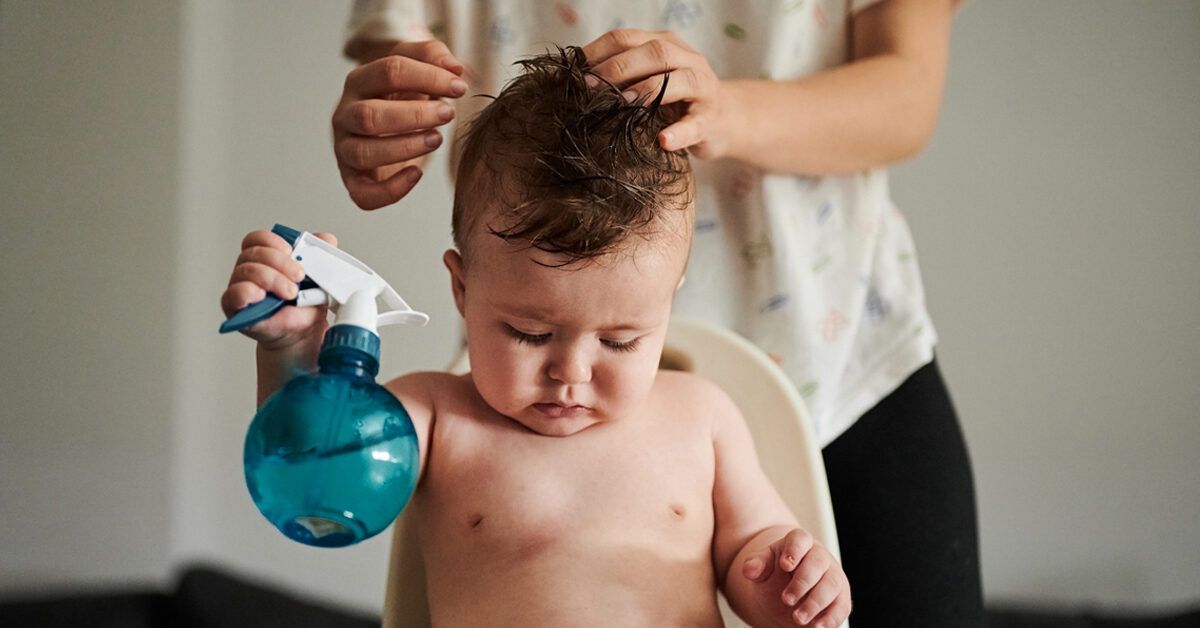
Hair Care for Baby Girls: A Comprehensive Guide
Introduction
The delicate hair of a baby girl is a precious asset that requires special care and attention. From the moment she is born, her hair will go through various stages of growth and development. Understanding the unique needs of baby hair is essential for maintaining its health and beauty. This comprehensive guide will provide you with all the necessary information and tips to ensure your baby girl’s hair thrives.
Understanding Baby Hair
Baby hair is significantly different from adult hair. It is finer, more fragile, and has a different growth pattern. The hair follicles are still developing, and the hair shaft is thinner and more prone to breakage. Additionally, baby hair tends to be drier and more susceptible to tangles.
Stages of Hair Growth in Baby Girls
- Newborn: At birth, babies may have a fine layer of hair called lanugo. This hair typically falls out within a few weeks.
- Infant: Around 3-6 months, new hair begins to grow in. It is usually soft and fine.
- Toddler: By 1-2 years old, the hair becomes thicker and may start to curl or wave.
- Preschooler: As your child approaches preschool age, her hair will continue to grow and develop. It may become longer and take on its permanent texture.
Hair Care Tips for Baby Girls
1. Gentle Washing:
- Wash your baby’s hair only when necessary, typically once or twice a week.
- Use a mild, tear-free shampoo specifically designed for babies.
- Avoid harsh detergents or soaps that can strip the hair of its natural oils.
- Massage the shampoo gently into the scalp and rinse thoroughly with lukewarm water.
2. Conditioning:
- After washing, apply a baby-safe conditioner to the hair.
- Conditioners help detangle, moisturize, and protect the hair from damage.
- Leave the conditioner in for a few minutes before rinsing.
3. Brushing:
- Use a soft-bristled brush or comb to gently remove tangles.
- Start brushing from the ends and work your way up to the roots.
- Avoid brushing too frequently, as it can cause breakage.
4. Detangling:
- If your baby’s hair is prone to tangles, use a detangling spray or cream.
- Apply the product to damp hair and gently comb through the tangles.
- Avoid pulling or tugging at the hair.
5. Drying:
- After washing, gently pat the hair dry with a soft towel.
- Avoid rubbing or twisting the hair, as it can cause damage.
- If using a hair dryer, keep it on a low heat setting and hold it at least 6 inches away from the hair.
6. Styling:
- Keep styling to a minimum, especially for younger babies.
- If you want to style your baby’s hair, use gentle products and avoid tight hairstyles that can put stress on the hair.
- Use hair accessories sparingly and remove them before bedtime.
7. Sun Protection:
- Protect your baby’s hair from the sun’s harmful UV rays by covering it with a hat or scarf.
- Use a hairspray with SPF protection for added protection.
8. Nutrition:
- A healthy diet is essential for healthy hair growth.
- Ensure your baby is getting enough vitamins and minerals, such as iron, zinc, and biotin.
9. Medical Conditions:
- If you notice any unusual changes in your baby’s hair, such as excessive hair loss, bald patches, or changes in texture, consult a pediatrician.
- Certain medical conditions can affect hair growth.
Common Hair Problems in Baby Girls
1. Cradle Cap:
- Cradle cap is a common condition in babies that causes dry, flaky patches on the scalp.
- Use a gentle baby shampoo and a soft brush to remove the flakes.
- Avoid using harsh products or picking at the flakes.
2. Tangles:
- Tangles are common in baby hair due to its fine and delicate nature.
- Use a detangling spray or cream and gently comb through the tangles.
- Avoid brushing too frequently or pulling at the hair.
3. Hair Loss:
- It is normal for babies to lose some hair in the first few months after birth.
- However, excessive hair loss can be a sign of an underlying medical condition.
- Consult a pediatrician if you notice significant hair loss.
4. Dry Hair:
- Baby hair is naturally dry and prone to tangles.
- Use a moisturizing conditioner and avoid harsh shampoos.
- Apply a small amount of baby oil or coconut oil to the hair for extra moisture.
5. Scalp Sensitivity:
- Some babies may have sensitive scalps that are prone to irritation.
- Use gentle, hypoallergenic products and avoid harsh chemicals.
- If your baby’s scalp is irritated, consult a pediatrician.
Conclusion
Caring for your baby girl’s hair is an important part of her overall health and well-being. By following these tips and understanding the unique needs of baby hair, you can ensure that her hair thrives and remains beautiful throughout her childhood. Remember to be gentle, use appropriate products, and consult a pediatrician if you have any concerns. With proper care, your baby girl’s hair will be a source of joy and pride for years to come.
